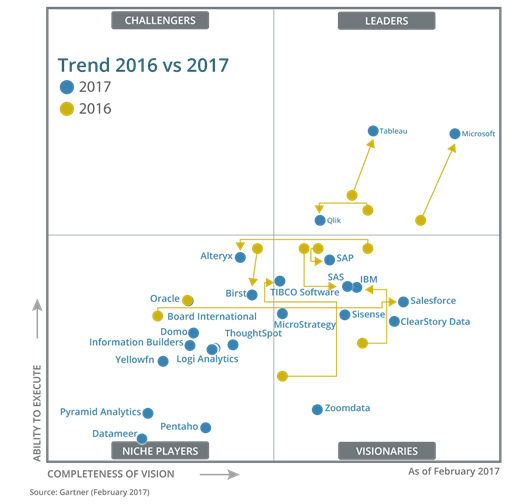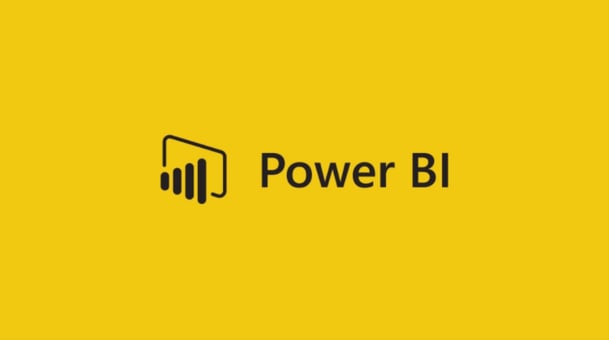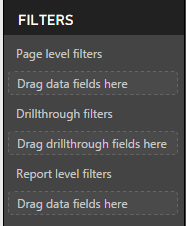Lately, people have been searching online for Power BI. Reason why? Because it’s one of the most recommended business intelligence tool available today. Power BI comes with your Office 365 Subscription for free, depending on your plan subscription.
Read previous Power BI blogs:
- How to get Microsoft Graph API Data on Microsoft Power BI
- How to Leverage Power BI for your SharePoint Reporting
If you didn’t already know, Microsoft Power BI was unveiled on September 2013 for Office 365. During 2016-2017, Power BI has contributed a lot for Microsoft’s growth in Data Visualization and Business Intelligence.
The Data Visualization for Business Intelligence tools as per Gartner:

I had a wonderful experience with Tableau earlier but now I find Power BI is much enhanced and easier to use. If you compare the trends of Power BI and Tableau in the years 2016 and 2017, Power BI has a better growth rate compared to its competitors.
The below questions were collected from various sources. For job aspirants, I really don’t know if this could help you for your interviews. But you can give it a shot.
#1. What is Power BI?

Microsoft Power BI comes with a bunch of Power BI Templates that delivers insights throughout your firm. The best part about Power BI is that you can integrate with hundreds of data sources. In addition, you can generate beautiful reports as well as the ability to save it as a dashboard. Your team can work on the visual data across web and smartphones. Lastly, it includes governance and security built-in features to protect all your data effectively.
Power BI Suits for All
Analysts
Start from Data -> Insight -> Action! You can connect to hundreds of sources easily and create beautiful reports within a few minutes.
Business Users
Since business users are always on the go, they can view dashboards from their laptop or smartphone easily. Setup alerts for data changes and drill down for more data. With the click of a button, business users can see all the necessary information in one page.
IT
IT professionals can achieve compliance, simplify management and protect data when giving access to users to the intelligence data they require.
Developers
Power BI is flexible to cater the end users’ needs. Develop applications to life with Power BI data. It’s easier to embed interactive dashboards into SharePoint Pages and other applications with high fidelity on several devices.
Why Power BI?
In short, Power BI helps you to:
- Display your data to multiple devices which includes tablet PCs, laptops, HTML 5 enabled smartphones that has the Power BI app installed.
- Share presentations with your team members.
- Update excel files from data sources that can sit on your servers or on cloud.
- Query data using natural language processing.
#2. What is DAX?
DAX stands for Data Analysis Expression. It is a formula language that is used for computing calculated field and column. It is used for doing basic calculations and data analysis in power pivot.
A Sample DAX formula syntax:
For the measure named Total Sales, calculate (=) the SUM of values in the [SalesAmount] column in the Sales table.

1. Measure Name
2. Indicates beginning of the formula
3. DAX Function
4. Parenthesis for the Sum Function
5. Referenced Table
6. Referenced column name
#3. Common DAX Functions
Some of the most commonly used DAX functions are:
- SUM, MIN, MAX, AVG, COUNTROWS, DISTINCTCOUNT
- IF, AND, OR, SWITCH
- ISBLANK, ISFILTERED, ISCROSSFILTERED
- VALUES, ALL, FILTER, CALCULATE,
- UNION, INTERSECT, EXCEPT, NATURALINNERJOIN, NATURALLEFTEROUTERJOIN,
SUMMARIZECOLUMNS, ISEMPTY, - VAR (Variables)
- GEOMEAN, MEDIAN, DATEDIFF
#4. Self-Service BI
SSBI or Self-Service BI is a way to data analytics that helps business users for segmenting, filtering and analyzing the data without in-depth tech knowledge in business intelligence and statistical analysis. Self-Service BI is made easier for the end users for accessing their data and enables them to create many visuals for getting better business insights. Business users can work with this data for generating reports for building shareable and intuitive dashboards so they can prepare for a better presentation model for their organization.
#5. Key components in Power BI
The key components in Power BI are:
- Tiles – It’s a single visualization in a dashboard/report - e.g. Bar Chart in a Dashboard or Report.
- Datasets – The dataset is a data collection where Power BI rely on creating visualizations - e.g. Oracle, SQL server tables, excel spreadsheets etc.
- Visualizations – Visualization is nothing but visual representation of the data. For e.g. Line Graph, Graphical Presentation of source data, Side by Side Bar Charts, Tree Map etc.
- Dashboards – It’s a single layer presentation of multiple visualizations that means, you can integrate one or many visualizations under one screen. For e.g. Sales Dashboard in Dock Intranet Portal, InstaExpense Dashboard etc.
- Reports – Report is nothing but a collection of visualizations which appear on one or more pages - e.g. Sales Report by state, country, city, retail performance report etc.
#6. Parts of Microsoft self-service business intelligence solution
Microsoft has got two parts for SSBI (Self-Service Business Intelligence):
- Power BI – This is an online solution which enables users to share queries and interactive reports, which was created using the Excel BI toolkit.
- Excel BI Toolkit – It helps users to create interactive reports by importing data from various sources and model data depending on the requirement of the report.
#7. Power BI Desktop
I’m pretty sure most of the users who are reading my blog have already installed the Power BI desktop app. If not, visit powerbi.microsoft.com to download a copy today. It works cohesively with Power BI service by giving data modeling, shaping and generating reports with beautiful visualizations. You can easily save your Power BI file or publish data and reports into your Power BI dashboard and share it with your colleagues.
#8. Content packs in Power BI
The Power BI Content packs are pre-built solutions that comes with the Power BI experience. When subscribed to this supported service, users can easily connect to their respective accounts using Power BI for checking out the data through visually appealing dashboards with live data. The best part is that templates are available for users to work on (It’s more like the visual models are pre-built for the users). The content packs are available for several services like Marketo, Saleforce.com, Adobe Analytics, CircuitID, Quickbooks Online. tyGraph, Azure Mobile engagement etc. The organizational content packs help users, system integrators and BI professionals to build their own content packs to contribute purpose-built reports, dashboards and datasets within the company.
#9. Data sources can Power BI connect to
Speaking about the list of data sources for Power BI, it is very vast. However, it can be grouped into the following types:
- Connectors – Connects to the databases/datasets like server analysis service tabular data, Azure SQL etc.
- Files – The data required for the Power BI dashboards can be imported from Excel, Access, Comma Separated Value (.csv), Power BI desktop files (.pbix) etc.
- Content Packs – These are a collection of related files/documents which is stored as a group. There are 2 types of content packs in Power BI (as mentioned in the #8 point). Content packs from service provides like Marketo, Google Analytics, Salesforce.com and second is the ones that are created and shared by other users in your company.
#10. Different types of filters in Power BI Reports

Microsoft Power BI gives users the option to filter data, reports and visualization as shown in the image above. The list of filter types is described below:
- Report-level Filters – The filters work on the entire report that filters all pages and visualizations that are included in the report.
- Visual-level Filters – Filters work only on an individual visualization that reduces the amount of data which the visualization can see. Also, visual-level filters can filter calculations as well as data.
- Page-level Filters – These filters work on report-page level. Various pages in the same report can have different page-level filters.
I have mentioned about Power BI’s interaction feature that helps to filter the report in just a click away. Visual interactions are beautiful, however comes with couple of limitations:
- The filter is always seen. Sometimes, you might need to filter for the whole report, but it doesn’t require any visual indication of the filter being applied.
- The filter doesn’t save as part of report. When you have opened the report, you start working on the visual filters. However, there isn’t a way to store filters in the saved report.
Well, that’s it for today. Stay tuned to our Power BI Series blogs in the coming days!
Book a Live demo
Schedule a live demo of Dock 365's Contract Management Software now.
Written by Sajin Sahadevan
He is a Microsoft Certified Technology Specialist cum Digital Marketing Expert and has experience of 6 years. He loves learning about latest technologies like CRM, collaboration tools, marketing solutions etc.




-1-2.webp)

